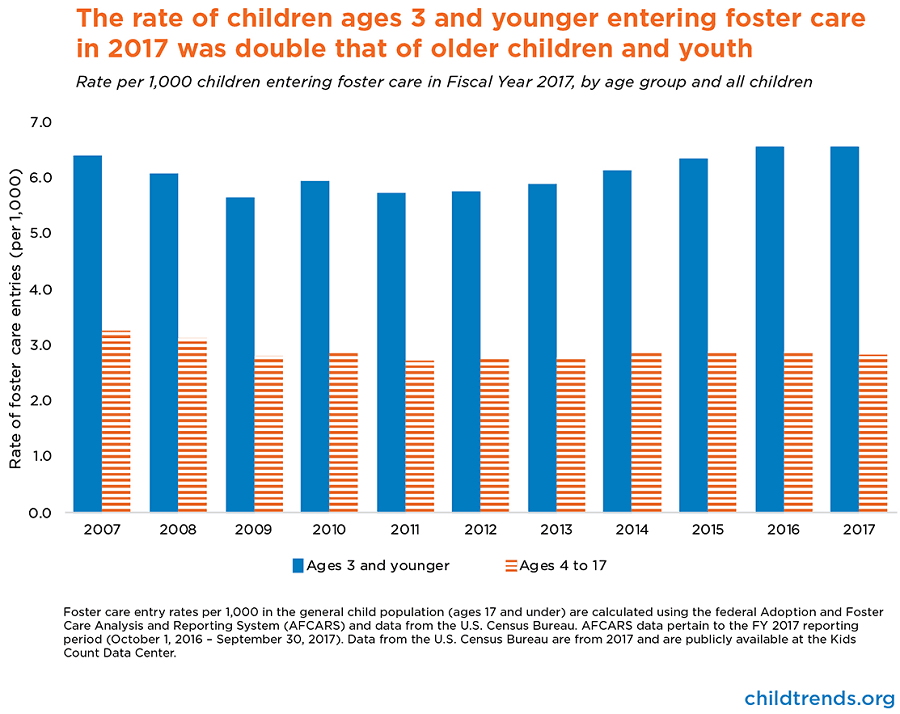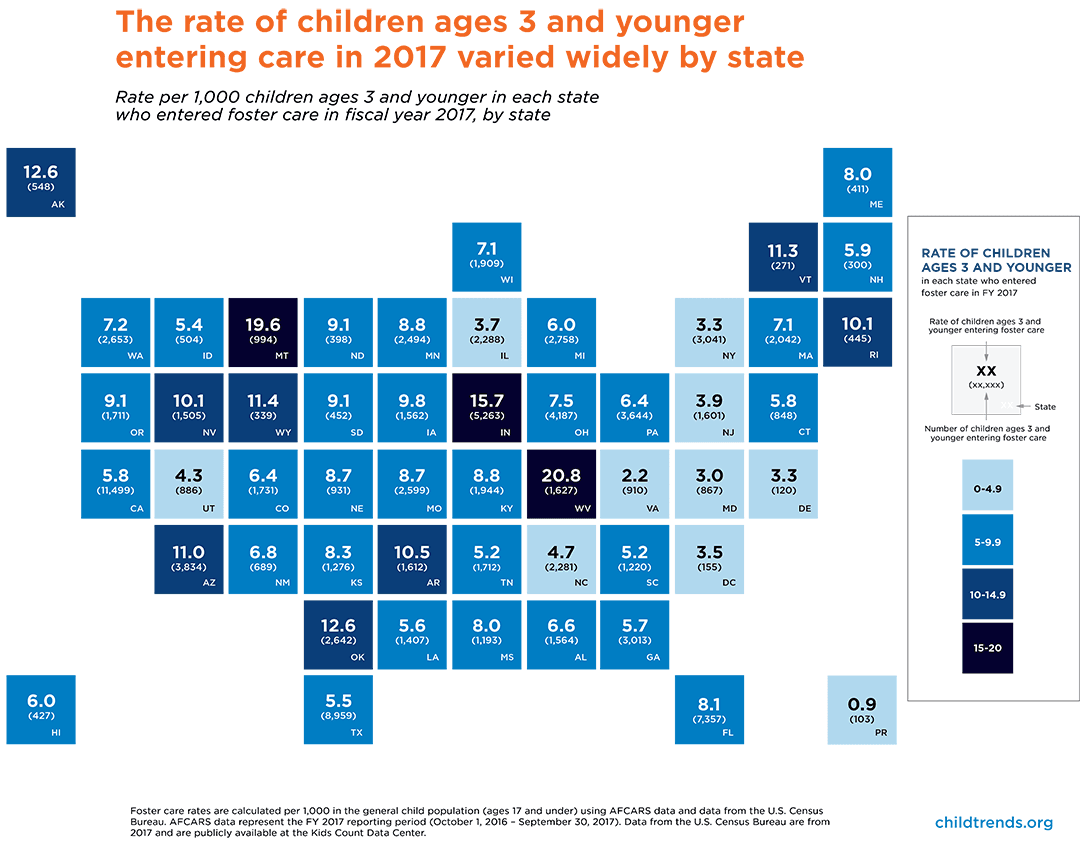Infants and toddlers are more likely than older children to enter foster care because of neglect and parental drug abuse
Nationally, nearly 105,000 children from birth to age 3 entered foster care in federal fiscal year (FY) 2017. Experiencing maltreatment can negatively affect children at any age, but the implications for infants and toddlers are especially severe. Abuse and neglect during early developmental stages can permanently alter brain functioning, which has lasting effects into adulthood. Effective prevention and intervention approaches are critical to averting such harm.
Infants and toddlers are twice as likely as older children to enter foster care. In the last 10 years, the rate of foster care entries for infants and toddlers has far exceeded the rate for older children and has driven the overall increase in foster care entry rates. In FY 2017, the rate was more than double, with 6.6 per 1,000 children ages 3 and younger entering foster care, compared to 2.8 for ages 4 to 17.

Child Trends’ analysis of FY 2017 data from the Adoption and Foster Care Reporting System (AFCARS) shows that states vary widely in rates of entry for children ages 3 and younger, from 0.9 per 1,000 children in Puerto Rico to 20.8 in West Virginia. The five states with the highest entry rates were West Virginia, Montana, Indiana, Alaska, and Oklahoma. Puerto Rico, Virginia, Maryland, Delaware, and New York had the lowest rates. Many factors likely contribute to this variation—for example, different thresholds for removing a child from the home, different practices and policies around reporting maltreatment, or regional- or community-level issues such as rates of opioid and methamphetamine use.

Nationally, for all children in foster care, the most commonly reported reasons for removal are neglect and parental drug abuse. Infants and toddlers are even more likely than older children to enter foster care due to neglect (68% vs. 59%) or parental drug abuse (46% vs. 30%). Infants are more vulnerable to their parents’ diminished caregiving abilities and, therefore, require more attention and care than older children and youth. Caregivers who could otherwise provide a stable home environment for their children often struggle to do so when dealing with substance use disorder, which can lead to neglect and maltreatment.
Of the 265,000 children and youth who entered foster care in FY 2017, 19 percent were infants under age 1. While neglect and parental drug abuse are the most common removal reasons for infants (65% and 49%, respectively), 4 percent were removed because of drug abuse by the child. Since infants cannot voluntarily use drugs, this figure is a proxy for infants exposed to drugs in utero, commonly called substance-exposed infants. This percentage is likely an underestimate due to variation in how states report removal reasons. However, changes in federal reporting requirements in the coming years will provide a more accurate count of substance-exposed infants nationwide. Beginning in FY 2018, the Children’s Bureau will collect information on the number of identified substance-exposed infants, as well as the number for whom a service referral was made.
Infants whose mothers used drugs during pregnancy are at risk for a range of physical, behavioral, and cognitive problems. To better serve this vulnerable population, federal regulations require states to develop plans of safe care for substance-exposed infants that outline how to address the health and treatment needs of the infant, mother, and family. Some states have passed their own legislation, such as Aiden’s Law in Delaware, formalizing the responsibilities of healthcare providers and child protective services to develop and execute plans of safe care for substance-exposed infants. Practitioners hope that the implementation of these plans will allow for healthy and safe transitions home from the hospital for infant and family.
© Copyright 2024 ChildTrendsPrivacy Statement
Newsletter SignupLinkedInThreadsYouTube